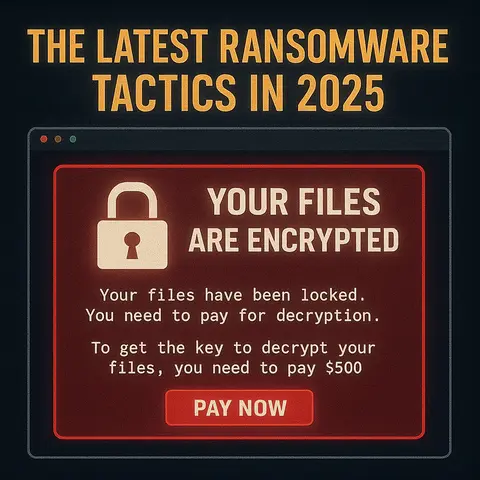
The Latest Ransomware Tactics in 2025: Double, Triple, and Emerging Extortion Trends
The seamless exchange of digital files powers our modern world. From cloud storage and email attachments to collaborative platforms and secure portals, file transfers are an integral part of how we communicate, work, and share information. Yet, this constant flow of data creates numerous entry points for cyber threats. Without proper security measures, file transfers can become significant vulnerabilities, exposing individuals and organizations to severe risks.
The act of moving a file from one location to another, whether it's across the internet or within a local network, presents several opportunities for malicious actors to intercept, corrupt, or exploit data.
Malware Infection: This is perhaps the most common and dangerous threat. Files can be disguised as legitimate documents (e.g., invoices, resumes, software updates) but contain hidden malware. Once downloaded and opened by the recipient, these files can unleash:
Data Interception (Man-in-the-Middle Attacks): If file transfers occur over unencrypted or insecure channels (like public Wi-Fi or outdated FTP), attackers can intercept the data in transit. This allows them to:
Unauthorized Access and Data Breaches: Weak authentication or misconfigured access controls on file-sharing platforms or servers can allow unauthorized individuals to access, download, or delete sensitive files. This can stem from:
Phishing and Social Engineering: Attackers often use phishing emails to trick users into downloading malicious files or clicking on links that lead to compromised file-sharing sites. These social engineering tactics exploit human trust and can bypass technical safeguards.
Data Loss: While not always malicious, insecure file transfer practices or system failures can lead to accidental data loss during transfer or storage, impacting productivity and potentially causing compliance issues.
Compliance Violations: Many industries are subject to strict data protection regulations (e.g., GDPR, HIPAA, PCI DSS). Using unsecure file transfer methods can lead to non-compliance, resulting in hefty fines and legal repercussions.
Shadow IT: Employees using unauthorized personal file-sharing services (e.g., consumer-grade cloud storage) for work purposes can create significant security gaps, as these platforms often lack the necessary enterprise-grade security features, monitoring, and audit trails.
Protecting files during transfer requires a multi-layered approach, combining robust technology with diligent user practices.
Always prioritize protocols designed for secure data transmission, which include encryption and authentication.
Verify who is accessing and transferring files.
Encryption scrambles data, making it unreadable to unauthorized parties.
Protect against malicious content and prevent sensitive data from leaving the network.
The "human element" is often the weakest link.
Maintain visibility into file transfer activities.
Keep all systems involved in file transfers hardened and up-to-date.
Prepare for the worst-case scenario.
File transfers are indispensable in our digital lives, but they are also a significant vector for cyberattacks. By understanding the common threats – from malware and data interception to unauthorized access and social engineering – individuals and organizations can take proactive steps to fortify their defenses. Implementing secure protocols, strong authentication, robust encryption, and continuous user education are not just best practices; they are fundamental requirements for maintaining data confidentiality, integrity, and availability in an increasingly complex threat landscape. Prioritizing file transfer security is an investment in digital resilience.